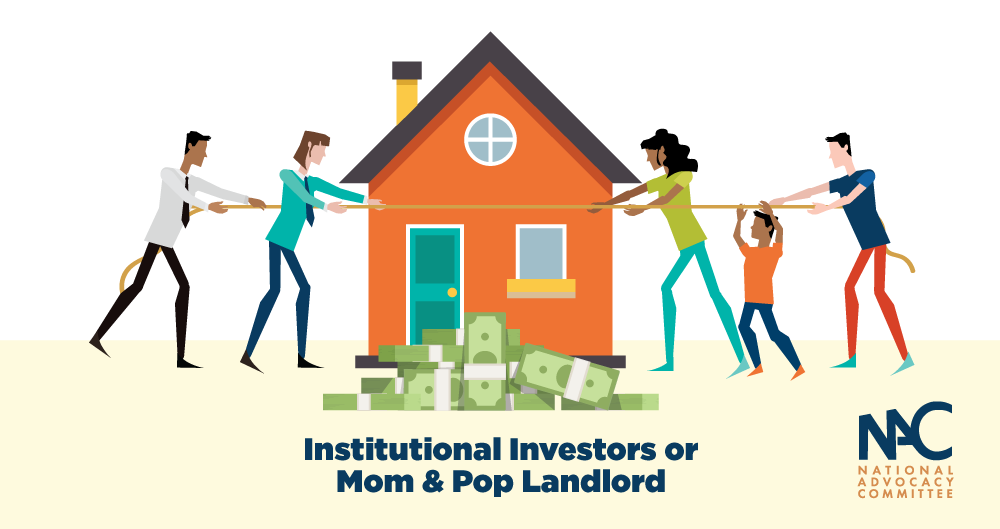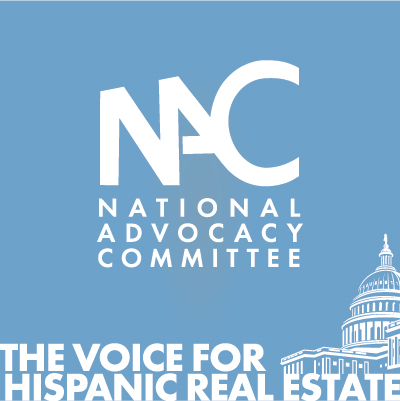Institutional or Mom & Pop Landlords: Who is most affecting the housing market?
Celebrating NAHREP familia, cultura, politics, and grassroots action
December, 2022

There has been a lot of buzz surrounding the topic of institutional investors, particularly in the last couple of years. In April, NAHREP released a blog that highlighted how investors have been increasingly sweeping up the little housing stock available for first-time homebuyers. Since then we’ve gotten some answers to our burning questions: who are these investors and what are they doing with these properties? New data from CoreLogic answers some of these questions and identifies current trends when it comes to investor purchases of single-family homes. Investor purchases of single-family homes are likely here to stay, absent any intervention. More than a quarter (26%) of single-family homes were purchased by investors in Q3 of this year, falling slightly from a record high of 28% in February of this year.
What types of investors are purchasing single-family homes?
The CoreLogic data shows that nearly half (49%) of investment properties purchased in Q3 of 2022 were made by small mom-and-pop investors, those with fewer than 10 properties. The other half was made up of medium-sized investors (11-100 properties) at 33%, large investors (101-1000) at 8%, and mega investors (more than 1000) at 11%. Additionally, the vast majority of all investor purchases are not being resold, likely held as rental properties. Only 15.3% of homes purchased by investors in March of this year were resold in the following six months.
Why is this important?
Many Latinos are mom-and-pop investors. Nationwide, 8.4% of Latino households own an investment property, an increase of 24.2% over the last ten years. That figure is much higher for NAHREP members – more than half of our members (58.7%) own at least one investment property and 87% plan to buy one in the next 5 years. It’s important to recognize that real estate investing can be a significant wealth building vehicle for Latino families.
Mom-and-pop investors can be more beneficial to the housing market overall than larger firms. Because mom-and-pop landlords are individual investors, they tend to have a more interactive and personalized approach to their investments, involvement, and overall renting requirements. This interactive and personalized approach makes them more likely to serve communities of color, less likely to evict tenants, and less likely to set high rents than their institutional counterparts. In other words, they are just more flexible.
On the other hand, larger investors have higher risks of increased rents and potential evictions. However, the bigger issue lies in the wealth building power homeownership brings. As institutional investors are typically cash buyers and buy in bulk, it removes more homes from the housing supply and puts that wealth building potential in the hands of Wall Street firms, rather than regualr families. By purchasing a vast amount of housing units at once, large firms can easily crowd out the market. The 2021 State of Hispanic Homeownership Report demonstrates how the rise in cash offers has made the homebuying process more difficult for Latinos and has placed them in bidding wars.
So, what can we do?¿Qué hacemos?
Addressing the problem of institutional investors can be a complicated one. On one hand, real estate investment is an important vehicle for wealth creation. However, we must ensure there is an adequate supply of housing for owner-occupants as well. Here are some ideas that have been floated around:
- Remove barriers to new construction: Institutional landlords tend to target areas with strict controls on new construction, allowing for greater profits. Removing barriers to new construction will increase the supply of houses built, revamp competition, and discourage institutional investors, as the markets become less attractive.
- Taxation on private equity: In 2022, Representative Adam Smith of Washington D.C., introduced the Saving Homes from Acquisition by Private Equity Act (SHAPE Act). This act will require a federal real estate transfer tax payment from institutional landlords and private equity firms who buy single-family homes in the housing market. From this tax payment, the state would create grants that could be used towards achieving affordable housing goals.
- Prioritize nonprofits: Broadening access to home acquisitions, particularly for foreclosures or distressed properties, for nonprofits rather than corporations. Many of these nonprofits, such as Community Development Financial Institutions (CDFIs), have the same benefits as a larger firm in that they can potentially pay cash and buy in bulk, but they go further to rehabilitate and resell properties to first-time homebuyers at a lower cost.
- More transparency: Tracking the purchasing trends that these institutional investors will not necessarily remove institutional landlords from the competition, but it will at least hold them accountable for any violations made to tenants. Additionally, the more we know about investors in the market
Join the NAC Blog Mailing List
SubscribeAbout NAHREP’s National Advocacy Committee
The National Association of Hispanic Real Estate Professionals® (NAHREP®) advocates on behalf of its network of 50,000 real estate professionals and Hispanic homeowners nationwide. NAHREP focuses on national and state legislative issues that are critical to its mission: to advance sustainable Hispanic homeownership.
NAHREP firmly believes every individual who desires to become a homeowner and can sustain a mortgage should be granted access to a piece of the American Dream. To that end, we are focused on three main priorities: Housing Inventory, Access to Credit, and Immigration. Visit our website to read more about NAHREP’s policy priorities and to get involved.



